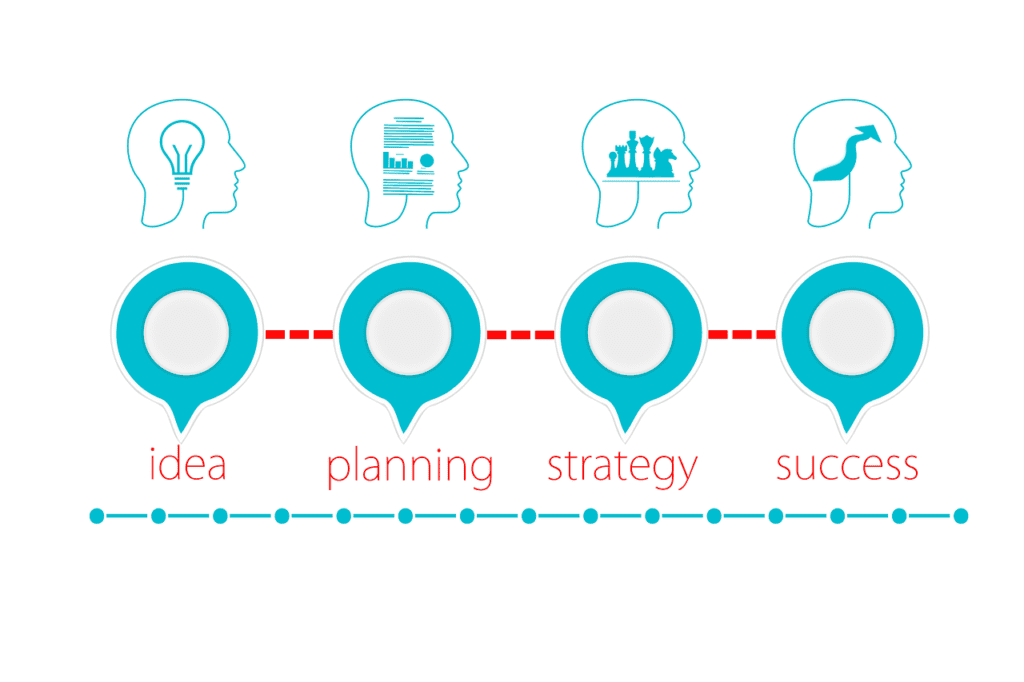Disclosure:
Some of the links on this website are affiliate links, which means that if you click on one of the links and sign up or make a purchase, we may earn a small commission at no additional cost to you. This commission helps support the maintenance and operation of this site.
We only recommend products or services that we believe will provide value to our readers. Our opinions and recommendations are based on our own research and experiences, and we strive to offer honest and unbiased content.
Please note that your support through these affiliate links is greatly appreciated, as it helps us continue to provide quality content and resources.
Thank you for your support!
Key Areas of Focus for Aspiring Entrepreneurs and Business Professionals
Entrepreneurship and innovation are critical components of the modern business landscape. Whether you’re starting a small business or scaling a high-growth startup, understanding business planning, innovation strategies, and startup culture can help lay the foundation for success. This guide will explore these topics in depth and offer insights into platforms, tools, and software that can assist both emerging and established entrepreneurs in developing sustainable, competitive businesses.

Business Planning
An Overview:
Business planning is one of the foundational pillars of any entrepreneurial journey. It involves creating a structured approach to building and growing a business, ensuring that every decision aligns with long-term goals. Whether you are an aspiring entrepreneur or a seasoned business professional, mastering the art of business planning is critical to navigating the complexities of the business world.
What is Business Planning?
Business planning is the process of outlining the key components of your business, including its goals, strategies, financial projections, target market, and operational framework. A well-crafted business plan serves multiple purposes:
- Guides Decision-Making: It helps entrepreneurs make informed decisions by providing a clear vision and actionable steps to achieve business objectives.
- Attracts Investors: A strong business plan is essential for securing funding from investors or lenders, as it demonstrates the viability of your business model and profitability.
- Defines Goals: It sets measurable and realistic milestones for growth and ensures that resources are allocated effectively.
- Mitigates Risk: Through thorough market research and financial forecasting, a business plan can help identify potential challenges and develop strategies to overcome them.
Key Elements of a Business Plan
- Executive Summary: This section provides a snapshot of your business, summarizing the key points of your business plan. It should briefly cover your business idea, target market, financial projections, and competitive advantage.
- Business Description: A detailed description of your business, including the mission, vision, goals, and the unique value proposition that differentiates your business from competitors.
- Market Research and Analysis: This section should include a deep dive into your target market, customer demographics, industry trends, and the competitive landscape. Identifying the market opportunity is crucial for justifying your business idea.
- Organizational Structure: This outlines the management structure of your business, including key roles and responsibilities. For startups, it may also cover recruitment plans and talent needs.
- Product or Service Line: A description of the products or services you will offer, how they fulfill customer needs, and the benefits they provide over competitors’ offerings.
- Marketing and Sales Strategy: An overview of how you plan to attract and retain customers. It includes pricing strategies, advertising plans, and sales tactics that will drive business growth.
- Financial Projections: This section is crucial for securing investors. It includes revenue forecasts, profit and loss statements, cash flow projections, and a break-even analysis.
- Funding Requirements: If you’re seeking financing, this section will detail how much capital you need, how it will be used, and the projected return on investment.
Tools for Effective Business Planning
When it comes to business planning, using the right tools can streamline the process and provide clarity. Below are some tools suitable for both small businesses and larger enterprises:
- For Small Businesses:
- LivePlan: An easy-to-use tool for creating business plans, including financial projections and strategy templates.
- Bizplan: Designed for startups, it offers a visual drag-and-drop business plan builder, ideal for entrepreneurs with limited experience.
- Enloop: Focuses on financial forecasting and plan automation, providing automated insights and grading to help refine your plan.
- For Larger Businesses:
- Adaptive Insights: A cloud-based platform offering advanced financial modeling and planning. It’s ideal for businesses needing scalable, complex forecasting.
- PlanGuru: Suited for businesses with more sophisticated financial needs, PlanGuru helps with budgeting, financial projections, and multi-scenario planning.
Key Skills for Business Planning
- Market Research: Effective business planning requires deep knowledge of the market, competitors, and customer needs. Entrepreneurs should focus on developing strong research and analytical skills.
- Financial Literacy: Understanding financial statements, projections, and break-even analysis is crucial for presenting a compelling business case to investors or stakeholders.
- Strategic Thinking: The ability to see the bigger picture and align daily operations with long-term goals is key. Entrepreneurs need to develop strategic planning skills to anticipate challenges and adjust plans accordingly.
- Problem-Solving: Business planning often involves addressing complex issues, such as funding gaps or resource allocation. Entrepreneurs should hone their problem-solving skills to navigate obstacles and find innovative solutions.
- Communication: Crafting a business plan that clearly articulates your ideas, vision, and financial projections is essential when communicating with potential investors, partners, or team members.
Alternatives for Larger Businesses
For businesses on a larger scale, the following tools are designed to meet more complex business planning and forecasting needs:
- Anaplan: Known for its versatility, Anaplan provides a platform that allows for cross-functional planning, collaboration, and real-time scenario analysis.
- Oracle NetSuite: This tool integrates financial planning, resource management, and business performance tracking, offering a comprehensive suite for enterprises.
Where to Focus Your Knowledge Base
When diving into business planning, entrepreneurs should focus on:
- Understanding their Market: Knowing the customer’s needs, competitors’ strengths and weaknesses, and industry trends.
- Developing a Strong Value Proposition: Articulating why your business is unique and how it provides value to customers.
- Mastering Financial Planning: Building a deep understanding of budgeting, forecasting, and creating realistic financial projections.
- Learning Effective Communication: Ensuring that your business plan is clear, concise, and persuasive for investors and stakeholders.
Business planning is a crucial component of entrepreneurship and innovation. Whether you are a solo entrepreneur starting a small business or a leader of a large organization, creating a well-structured business plan can set you on the path to success. The right tools, skills, and strategic approach will enable you to navigate challenges and capitalize on opportunities, making your business resilient and growth-oriented in an ever-changing market landscape.

Innovation Strategies
Driving Growth and Competitive Advantage
In today’s fast-paced business world, innovation is key to gaining a competitive edge and ensuring long-term success. For aspiring entrepreneurs and business professionals, developing a deep understanding of innovation strategies is crucial. Innovation strategies involve identifying new ideas, products, services, or processes that can transform a business and improve efficiency, customer satisfaction, and profitability. Below is a detailed expansion on innovation strategies, including key areas to focus on and practical insights for entrepreneurs.
1. Types of Innovation Strategies
Innovation strategies vary depending on the goals and resources of the business. Here are the primary types:
- Product Innovation: This focuses on creating new or improved products that provide better functionality, design, or usability. This can range from incremental improvements to completely new products that revolutionize an industry.
- Process Innovation: Improving the efficiency or effectiveness of internal operations, such as adopting new technology for faster production, optimizing logistics, or creating more efficient workflows. Process innovation helps businesses cut costs and improve productivity.
- Business Model Innovation: Rethinking the way a business generates value. This involves changing how a business operates, whether through new revenue models, customer experiences, or channels of distribution. Examples include the shift to subscription models or digital platforms.
- Open Innovation: This involves collaborating with external partners, customers, or communities to bring in fresh ideas and technology. Open innovation fosters a culture of collaboration and co-creation, allowing businesses to leverage external expertise.
- Sustainable Innovation: Creating eco-friendly products or adopting practices that minimize the environmental impact. As consumers become more eco-conscious, sustainable innovation not only benefits the planet but also appeals to a growing customer base focused on ethical purchasing.
2. Developing an Innovation Mindset
For entrepreneurs and business leaders, having an innovative mindset means being open to change, embracing creativity, and constantly seeking opportunities for improvement. Here’s how to cultivate this mindset:
- Embrace Risk: Innovation often involves venturing into unknown territory. Entrepreneurs must be comfortable with calculated risks and recognize that failure is part of the learning process.
- Foster a Culture of Creativity: Encourage team members to think outside the box. Provide opportunities for brainstorming sessions and reward creative ideas that can lead to innovation.
- Continuous Learning: Stay updated on industry trends, emerging technologies, and market shifts. Lifelong learning helps entrepreneurs adapt to new opportunities.
- Customer-Centric Approach: Focus on solving real problems for your customers. Engaging with customers and gathering feedback can lead to innovative products or services that meet their needs.
3. Key Innovation Strategies to Focus On
- Lean Startup Approach: The lean startup method encourages entrepreneurs to launch products quickly with minimal investment and refine based on customer feedback. This strategy reduces the risk of failure by allowing businesses to pivot early based on real-world results.
- Agile Innovation: Agile methodology promotes adaptability and continuous iteration. By breaking projects into smaller, manageable tasks, businesses can innovate more quickly and respond to changing market conditions.
- Design Thinking: This is a problem-solving approach that puts human needs at the center of innovation. Entrepreneurs use empathy to understand user needs, ideate creative solutions, and prototype quickly to test ideas.
- Disruptive Innovation: Disruptive innovation refers to creating products or services that start small but ultimately redefine entire industries. This typically involves offering a simpler, more affordable solution that outcompetes established businesses.
4. Tools and Platforms for Innovation
For entrepreneurs and businesses just starting, the following tools and platforms can help manage the innovation process and generate new ideas:
- For Small Businesses:
- Trello: Great for managing innovation projects and team collaboration.
- Miro: An online whiteboard tool to brainstorm and map out innovative ideas.
- Google Design Sprint: Frameworks for running design sprints and quick prototyping.
- For Larger Businesses:
- IdeaScale: A crowdsourcing platform that allows businesses to gather and evaluate innovative ideas from employees and customers.
- Spigit: Enterprise-level platform for managing innovation processes, from idea generation to implementation.
- Brightidea: Software designed to help manage the entire innovation lifecycle, from ideation to execution.
5. Skills to Develop for Innovation Success
To lead successful innovation efforts, entrepreneurs and business professionals need to focus on specific skills:
- Creative Problem-Solving: Developing the ability to think creatively about how to tackle business challenges and explore novel solutions.
- Critical Thinking: Analyzing problems and situations from different angles to make sound, data-driven decisions.
- Collaboration: Innovation often thrives in collaborative environments. Working effectively with teams, customers, and external partners is key to fostering innovation.
- Adaptability: Markets and industries change rapidly, and entrepreneurs must be adaptable to pivot or modify their strategies to stay competitive.
- Project Management: Efficiently managing resources, timelines, and tasks is crucial for ensuring that innovative projects are completed successfully.
6. Challenges and Considerations in Innovation
While innovation drives growth, it comes with its own set of challenges. Entrepreneurs should be prepared for the following:
- High Uncertainty: New ideas may not always work as expected, which can lead to financial risks.
- Resistance to Change: Both employees and customers may resist innovative ideas, especially if they challenge existing norms.
- Resource Constraints: Innovation often requires investment in time, talent, and capital. Finding the balance between day-to-day operations and innovation efforts can be difficult.
Despite these challenges, businesses that prioritize innovation strategies tend to be more resilient, adaptive, and competitive.
7. Potential Business Opportunities in Innovation
By applying these innovation strategies, aspiring entrepreneurs can explore various business opportunities, including:
- Tech Startups: Launching a software, app, or platform that disrupts existing markets.
- Sustainable Products: Developing eco-friendly consumer goods or services.
- Subscription-Based Models: Offering products or services on a subscription basis to create recurring revenue.
- Process Automation: Creating tools and software that streamline business operations or manual tasks.
Innovation strategies are crucial for entrepreneurs and businesses looking to succeed in an increasingly competitive world. Whether through product, process, or business model innovation, focusing on creative problem-solving, adaptability, and continuous improvement helps businesses stay ahead of the curve. By leveraging tools like design thinking, agile methodology, and crowdsourcing platforms, entrepreneurs can drive innovation and foster sustainable growth.
For anyone starting their entrepreneurial journey, mastering these innovation strategies will not only help you create impactful businesses but also ensure long-term success in the dynamic global market.

Startup Culture
Key Elements in Entrepreneurial Success
Startup culture refers to the unique environment, behaviors, and values that characterize early-stage businesses, especially in technology-driven and innovation-oriented sectors. It plays a crucial role in how a business operates, grows, and achieves long-term success. Understanding the dynamics of startup culture is essential for aspiring entrepreneurs who wish to create successful ventures.
1. Core Characteristics of Startup Culture
- Innovation-Centric: Startups are often built around innovative ideas or disruptive solutions that aim to solve problems in new ways. Creativity and experimentation are core values.
- Agility and Adaptability: The ability to pivot, adapt, and make quick decisions is crucial in the fast-paced startup environment. Startups must be prepared to change course as they learn from market feedback or face new challenges.
- Collaboration and Flat Hierarchies: Many startups prioritize open communication and collaboration, often adopting flat organizational structures that minimize bureaucratic layers. This fosters teamwork and a sense of shared purpose.
- Risk-Taking: Startups are inherently risky. Founders, investors, and employees often operate with uncertainty and must be willing to take calculated risks to succeed.
- Passion and Mission-Driven: Startup founders and their teams are typically driven by a passion for their product or service and a strong belief in their mission. This can create a deeply motivating work environment.
- Work-Life Blending: In startups, there is often a blurred line between work and personal life, as founders and early employees may work long hours to push the company forward.
2. Importance of Startup Culture for Success
- Attracting Talent: A vibrant, purpose-driven startup culture helps attract top talent, especially those who are motivated by the opportunity to make an impact rather than simply earning a paycheck.
- Driving Innovation: Startup cultures that encourage creativity and experimentation are better equipped to develop breakthrough ideas and innovate more quickly than traditional businesses.
- Building Resilience: A strong culture can provide the emotional and psychological support necessary for founders and teams to persevere through challenges, setbacks, and failures.
3. Challenges of Startup Culture
- Burnout: Long hours and high demands can lead to burnout if employees do not find a healthy balance between their personal and professional lives.
- Lack of Structure: The absence of well-established processes can lead to confusion or inefficiency as the company scales.
- Pressure for Rapid Growth: Startups often face pressure from investors or the market to grow rapidly, which can strain resources and lead to missteps.
4. Key Elements to Cultivate in Startup Culture
- Transparency: Maintaining open communication and honesty between employees, leadership, and stakeholders fosters trust and reduces misunderstandings.
- Customer Focus: Startups must remain close to their customers to understand their needs and rapidly iterate on their products or services based on customer feedback.
- Empowerment: Providing employees with autonomy and the freedom to make decisions can boost morale and productivity. Empowered employees are more likely to take ownership of their work and contribute meaningfully.
- Continuous Learning: A growth mindset is essential in startups, where rapid changes require constant learning and adaptation. Fostering a culture of learning encourages innovation and keeps the team motivated.
- Diversity and Inclusion: Successful startups often benefit from diverse teams that bring varied perspectives, leading to more creative problem-solving and innovation.
5. Tools and Resources for Building Startup Culture
- Slack: For communication and collaboration, especially in remote or hybrid teams.
- Notion: For project management and documentation to keep the team organized.
- Gusto: For managing HR functions, payroll, and benefits as the team grows.
- Trello or Asana: For task management, especially important when scaling teams and handling multiple projects simultaneously.
- Zoom or Microsoft Teams: For remote meetings and communication.
6. Key Skills for Startup Founders and Employees
- Adaptability: Startups operate in uncertain environments, so being flexible and open to change is critical.
- Leadership: Whether you are the founder or an early employee, leadership skills are important in setting the tone for collaboration and motivating the team.
- Problem-Solving: Startups often face unexpected challenges, and the ability to think critically and solve problems quickly is crucial.
- Emotional Intelligence: Building strong relationships, managing stress, and navigating interpersonal dynamics are essential for maintaining a healthy startup culture.
- Time Management: With limited resources, managing time effectively is essential to keep up with the fast pace of startup life.
7. Scaling and Evolving Startup Culture
- As startups grow, maintaining the original culture can be challenging. Founders must be intentional about preserving the core values while introducing necessary structure and processes.
- Defining Core Values: Codifying values helps to guide decision-making and keeps the team aligned as it grows.
- Hiring for Culture Fit: As startups expand, hiring employees who align with the company’s mission and values ensures the culture remains intact.
- Investing in Employee Development: Continuous learning opportunities and professional development programs help employees grow with the company and remain motivated.
8. Startup Culture in Larger Companies
- Larger organizations often try to adopt a startup mindset to remain innovative and agile. They may create “innovation labs” or small, cross-functional teams that operate with the autonomy of a startup within the larger structure.
- Intrapreneurship: Encouraging employees to act as entrepreneurs within the organization by developing new projects, products, or processes. This fosters a culture of innovation, even in established companies.
9. Startup Culture in the Remote Work Era
- Remote work has become increasingly common in startups, leading to new challenges in building culture. Tools like Slack and Zoom facilitate communication, while virtual team-building activities help maintain camaraderie.
- Flexibility: Startups that embrace remote or hybrid work models offer employees the flexibility to balance work and personal life, which can improve job satisfaction and retention.
- Maintaining Connectivity: Regular virtual check-ins, team collaboration tools, and fostering a sense of belonging even when remote are essential to maintaining culture in distributed teams.
10. Startup Culture and Funding
- For startups seeking investment, building a strong culture is often seen as a positive signal by investors. It indicates that the team is cohesive, driven, and aligned with the company’s vision, which can increase the likelihood of securing funding.
Startup culture is a crucial factor that can determine the success or failure of a new venture. By fostering innovation, collaboration, and resilience, a strong startup culture can help entrepreneurs and their teams navigate the uncertainties of launching a business. Aspiring entrepreneurs must actively cultivate this culture by prioritizing transparency, customer focus, and empowerment, while also addressing the challenges that come with the fast-paced and high-pressure environment of startups.
Entrepreneurship and innovation are dynamic fields that require a blend of business planning, creativity, and adaptability. Understanding the core principles behind these disciplines can make the difference between building a stagnant business and one that thrives in today’s competitive market. With the right tools, skills, and mindset, entrepreneurs can drive growth, disrupt industries, and build sustainable businesses.
From the foundational aspects of creating a solid business plan to mastering innovation strategies and fostering a healthy startup culture, aspiring entrepreneurs must focus on key areas that align with their vision. Whether you’re leveraging innovation management tools, adopting flexible business models, or fostering a collaborative work environment, success in entrepreneurship is built on continuous learning and adaptation.
In today’s rapidly evolving business world, staying informed about the latest tools, technologies, and trends is essential for both small business owners and large enterprises. Understanding how to integrate innovation, planning, and startup values into your entrepreneurial efforts will ultimately lead to a more resilient, agile, and successful business.
FAQ on Entrepreneurship and Innovation
1. What is business planning, and why is it important for entrepreneurs?
Business planning is the process of outlining goals, strategies, and action steps for your business. It’s important because it provides a clear roadmap, helps attract investors, guides decision-making, and ensures long-term sustainability. Key elements of a business plan include market analysis, financial projections, marketing strategy, and an overview of your products or services.
2. What are some recommended tools for creating a business plan?
Some widely-used business planning tools are:
- LivePlan: Ideal for startups, it offers a simple interface for building comprehensive business plans.
- Enloop: Offers automatic business plan writing and financial forecasting.
- Bizplan: A drag-and-drop platform best suited for visual thinkers.
For larger businesses:
- PlanGuru: Advanced financial forecasting and planning.
- Adaptive Insights: Scalable planning software with in-depth scenario analysis.
3. What are innovation strategies, and how do they benefit entrepreneurs?
Innovation strategies involve adopting new ideas, technologies, or processes to improve your business or create new markets. This can lead to increased efficiency, cost reduction, or delivering superior customer value. Types of innovation include product innovation, process innovation, and business model innovation.
4. Which tools are best for managing innovation?
Popular tools for managing innovation include:
- IdeaScale: A platform for crowdsourcing and evaluating innovative ideas.
- MindMeister: A mind-mapping tool for organizing and visualizing ideas.
- Monday.com: A project management tool to collaborate on innovation-focused initiatives.
For larger businesses:
- Spigit: Enterprise-grade innovation management.
- Brightidea: Large-scale brainstorming and innovation management platform.
5. What is startup culture, and why is it crucial for new businesses?
Startup culture refers to a flexible, innovation-driven work environment often characterized by collaboration, agility, and a focus on rapid growth. It fosters a high degree of risk-taking, creativity, and team-oriented problem-solving, all of which are crucial for early-stage businesses looking to disrupt markets or innovate quickly.
6. What tools can help cultivate a strong startup culture?
Some popular tools for fostering startup culture are:
- Slack: A real-time messaging platform that encourages team communication.
- Trello: A visual project management tool for tracking tasks and collaborating.
- Asana: A comprehensive task and project management tool for small teams.
For larger businesses:
- Microsoft Teams: A robust communication and collaboration platform.
- Jira: A project management tool tailored for development teams.
7. What skills are necessary for success in entrepreneurship and innovation?
Key skills include:
- Strategic Thinking: Developing long-term goals and understanding market opportunities.
- Creative Problem-Solving: Finding innovative solutions to complex challenges.
- Risk Management: Balancing innovation with potential business risks.
- Team Leadership: Fostering collaboration and motivating your team.
- Communication: Effective communication across all levels of your business.
8. What platforms and tools should aspiring entrepreneurs explore for business innovation?
- Business Planning: LivePlan, Enloop, Bizplan for small businesses; PlanGuru, Adaptive Insights for larger enterprises.
- Innovation Management: IdeaScale, MindMeister, Monday.com for small teams; Spigit and Brightidea for larger organizations.
- Project Management: Trello, Asana, Slack for startups; Microsoft Teams, Jira for larger businesses.
9. What is the role of adaptability in a startup culture?
Adaptability is crucial in a startup culture as it allows businesses to pivot quickly in response to market feedback or challenges. It enables rapid iteration of products, services, or processes, keeping the business competitive and responsive to change.
10. How can entrepreneurship and innovation lead to business success?
By leveraging well-structured business plans, fostering a culture of innovation, and utilizing appropriate tools, entrepreneurs can create scalable, sustainable businesses. Innovation drives growth and gives businesses a competitive edge, while entrepreneurship skills such as strategic planning and leadership are essential for long-term success.
More on Business here.






Leave a Reply